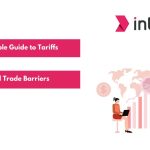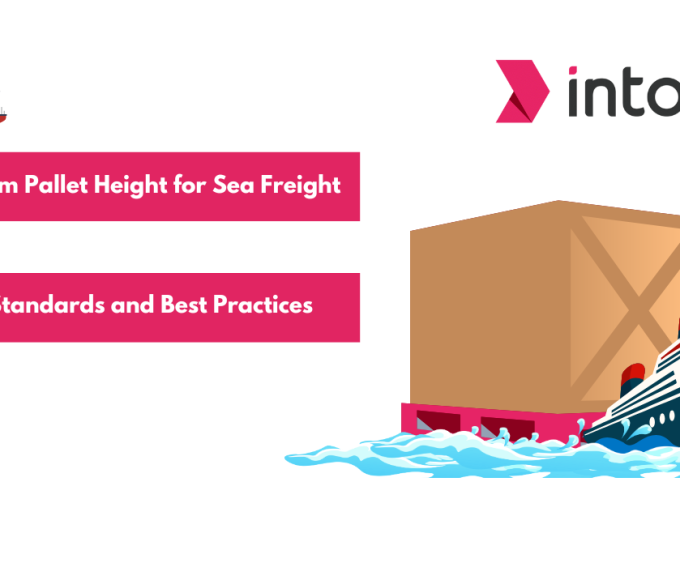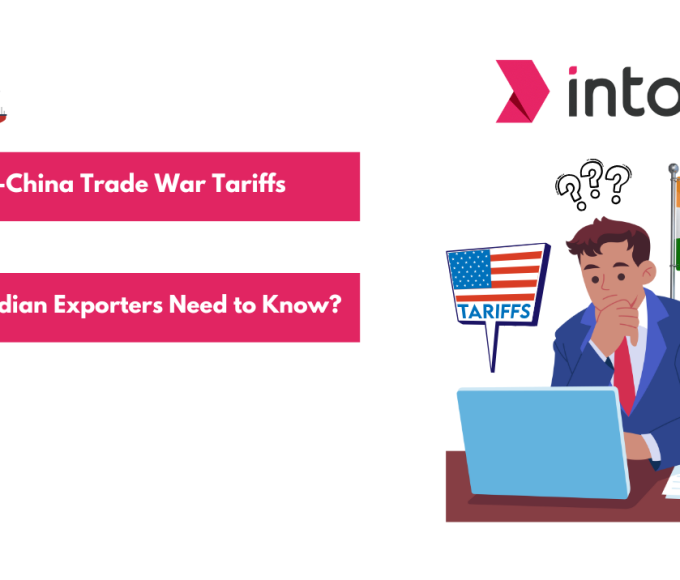When you’re exporting goods, trade barriers like tariffs and quotas can directly impact your pricing, profit margins, and even your shipment volumes. Trade policies, especially tariffs and quotas can have a significant impact on your overall cost structure, market access, and profitability. Governments across the world use these tools to control the flow of goods across borders, often as part of broader trade strategies or to protect domestic industries.
While both tariffs and quotas are used to limit imports, they do so in different ways—and the implications for your export business can vary widely depending on which one is in play.
In this article, you’ll get a clear understanding of what sets tariffs and quotas apart, why they’re imposed, and how to navigate them to keep your exports competitive and compliant.
What is Tariff and Quota?
When you hear about tariffs and quotas, think of them as two different ways countries control the flow of goods across their borders. A tariff is basically a tax or duty placed on imported goods. It makes those goods more expensive, which can protect local businesses from foreign competition or generate government revenue. As an exporter, tariffs mean your products might face added costs when entering certain markets, affecting your pricing and competitiveness.
On the other hand, a quota sets a physical limit on the quantity of a specific product that can be imported into a country during a set period. This means no matter how much you want to export, only a fixed amount is allowed in. Quotas can create tight restrictions that impact how much you can sell in a market, sometimes leading to waiting lists or bidding for limited space.
Both tariffs and quotas affect how easily and profitably you can move your goods internationally, but they work in very different ways. Understanding these basics helps you prepare and adjust your export plans accordingly.
Revenue and Protection Mechanisms
Tariffs and quotas serve two main purposes for governments: raising revenue and protecting local industries.
Tariffs act as a direct source of income. When your products enter a country with a tariff, the importer usually pays a tax based on the value or quantity of those goods. This tax flows straight into the government’s budget. From your perspective as an exporter, tariffs mean your product prices might need to rise to cover these extra costs, or you may face pressure to absorb the charges, which can cut into your profits.
Quotas, meanwhile, focus more on protection than revenue. By limiting the number of goods allowed in, quotas restrict competition from foreign sellers. This can keep local producers safe from being overwhelmed by cheaper or higher volumes of imports. For exporters, quotas often mean stricter limits on how much you can sell, regardless of demand. While quotas might not directly generate income for the government, they create a barrier that can make entering a market tougher.
Understanding whether a trade measure is mainly about raising money or protecting local business helps you figure out the challenges and opportunities in each market. It also guides how you price your products and plan your export volumes.
Suggested Read: General Rate Increase in Shipping
Types of Tariffs and Quotas
Both tariffs and quotas come in different forms, and knowing these types helps you understand how they might affect your exports.
Types of Tariffs:
- Ad Valorem Tariff: Charged as a percentage of the product’s value. For example, a 10% tariff on a $1,000 product adds $100 to the cost. This type adjusts automatically with the product price.
- Specific Tariff: A fixed fee based on quantity, weight, or volume. For example, $5 per kilogram of goods imported. This is easier to calculate but doesn’t change with the product’s market price
- Compound Tariff: Combines both ad valorem and specific tariffs. For example, a product may face a 5% value-based tariff plus $2 per unit. This can make the overall cost more complex to figure out.
- Mixed Tariff: Applies different types of tariffs depending on product categories or circumstances. For instance, a product might face a specific tariff on one part and an ad valorem tariff on another, or tariffs might vary based on trade agreements or import volumes.
Types of Quotas:
- Absolute Quota: Sets a strict limit on the quantity or value of goods that can enter a country during a specified period. Once the limit is reached, no more imports are allowed.
- Tariff-Rate Quota (TRQ): Allows a certain quantity of goods to enter at a lower tariff rate, but imports beyond that limit face higher tariffs. This combines aspects of both quotas and tariffs.
- Global Quota: Applies to all exporters collectively. For example, a country might allow only 10,000 units of a product from all foreign suppliers combined.
- Selective Quota: Limits imports from specific countries or companies. This can favor some exporters while restricting others.
Understanding these types helps you prepare for the specific rules in each market and tailor your export plans accordingly.
What is the Impact on Price and Availability?
Tariffs and quotas both influence the prices of goods, but they do so in different ways that exporters need to watch closely.
Tariffs directly increase the cost of your products when they enter a foreign market. Since tariffs act like a tax, importers usually pass this added expense on to buyers. This means your products can become more expensive compared to local goods or competitors from countries with lower tariffs. As an exporter, you may need to decide whether to raise your prices to cover the tariff or absorb the cost yourself, either way affecting your profit margins and sales potential.
Quotas affect prices differently. By limiting the supply of certain goods, quotas often create scarcity in the market. When the available quantity is low but demand remains high, prices tend to rise. This can work in your favor if you secure quota space because less competition might allow for higher pricing. However, if you’re restricted by a tight quota, it can also limit how much you sell overall, capping your revenue potential.
Manage Costs and Shipping Smoothly with Intoglo
Navigating tariffs, quotas, and international shipping costs can get complicated fast. Intoglo simplifies this with seamless door-to-door FCL shipments from India to the USA. From origin pickup and customs clearance to ocean freight and last-mile delivery, we ensure your goods move smoothly and on time. With pan-India pickups in 24 hours, own CFS space at major ports, contracts with top shipping lines, and a direct trucking network in the USA, Intoglo keeps your shipments transparent and hassle-free.
Plus, our AI-powered HS Code scanner helps you instantly identify the correct HS codes and applicable tariffs, so you can plan your shipments without surprises. Track your cargo end-to-end and get clear, upfront quotes with no hidden fees.
Make your export process easier with Intoglo’s reliable logistics.
Case Study: US Tariffs on Indian Imports (2025)
In April 2025, the United States implemented a new set of reciprocal tariffs targeting imports from over 180 countries, including India. This policy was part of a broader strategy to address what the US administration described as unfair trade practices by its trading partners.
Tariff Details
- A universal baseline tariff of 10% was imposed on all imports into the US.
- For India, the tariff rate was set even higher: most Indian goods faced a 27% tariff, with specific products such as automobiles, auto parts, steel, and aluminium subject to a 25% tariff.
- Pharmaceuticals and semiconductors from India were exempted from these tariffs, recognizing their strategic importance.
This is a classic example of an ad valorem tariff—a percentage-based tax imposed on the value of imported goods.
Impact
- Indian exports to the US, particularly in sectors like gems and jewelry, textiles, and agriculture, became less competitive due to higher prices in the US market.
- The Indian pharmaceutical sector benefited from the exemption, maintaining its strong position in the US market.
Suggested Read: HS Code 62034231 for Men’s Trousers and Tariffs
Economic Consequences of Tariffs and Quotas
Tariffs and quotas can have wide-ranging effects on both the countries involved and exporters like you. Knowing these consequences helps you see the bigger picture behind these trade measures.
Economic Consequences of Tariffs:
- Increase prices of imported goods, protecting local industries.
- Can reduce demand for your exported products due to higher costs.
- May lead to trade tensions or retaliations between countries.
- Often causes a drop in overall trade volume and slow economic growth.
- Create uncertainty in export markets, making planning harder.
Economic Consequences of Quotas:
- Limit supply, creating shortages and driving prices up.
- Protect domestic producers by restricting foreign competition.
- Restrict your market access and cap potential export revenue.
- Can lead to inefficiencies in local industries due to less competition.
- May trigger trade disputes and harm long-term trade relationships.
These points highlight the challenges tariffs and quotas can bring to exporters and the wider economy.
Strategic Uses in Trade for Tariffs and Quotas
Countries use tariffs and quotas not just to protect local industries or raise revenue—they often apply these tools strategically to achieve broader economic or political goals. As an exporter, understanding these strategies helps you anticipate shifts in trade policies and adjust your approach accordingly.
Strategic Uses of Tariffs:
- Protect Domestic Industries: Tariffs raise the price of imported goods, making local products more attractive to buyers. This helps fledgling industries survive against established foreign competitors.
- Generate Government Revenue: Governments collect tariffs as a form of tax on imports, which adds to national income. This revenue can fund public projects or support social programs.
- Negotiate Trade Agreements: Tariffs serve as leverage in trade talks, encouraging other countries to offer better terms. By adjusting tariffs, countries can push for reciprocal benefits or concessions.
- Combat Dumping: Dumping happens when foreign companies sell goods below cost to undermine local businesses. Tariffs help level the playing field by increasing the price of such unfair imports.
- Influence Consumer Choice: Higher tariffs raise import costs, nudging consumers to buy domestic alternatives. This supports local businesses and keeps money within the country.
- Retaliation Against Unfair Practices: When trading partners impose unfair barriers, tariffs can be used as a response. This pressure aims to push them to change their policies.
- Protect National Security: Tariffs can limit imports of products vital for defense and critical infrastructure. This ensures local control over essential resources during crises.
Strategic Uses of Quotas
- Limit Import Volume: Quotas restrict the quantity of certain goods entering a country. This protects domestic markets from being overwhelmed by cheap foreign products.
- Support Emerging Industries: By capping imports, quotas give new industries a chance to grow without intense competition. This helps them build capacity and improve quality over time.
- Control Trade Balance: Import limits help reduce the total value of goods coming in, addressing trade deficits. Keeping imports in check supports local production and economic stability.
- Protect Local Employment: Limiting foreign goods reduces pressure on domestic manufacturers, preserving jobs. This prevents sudden layoffs caused by cheaper imported products.
- Manage Supply Stability: Quotas avoid unpredictable spikes in imports that can disrupt prices and supply chains. This ensures a steady market environment for producers and consumers.
- Leverage in Trade Negotiations: Quotas can be adjusted to reward or penalize trade partners during negotiations. This flexibility helps secure better deals or resolve disputes.
- Respond to Trade Disputes: When faced with unfair trade actions, countries may impose quotas as retaliation. This serves as a non-monetary tool to express dissatisfaction and demand change.
Conclusion
Understanding the difference between tariffs and quotas is essential for any exporter aiming to succeed in international markets. While tariffs add a cost layer through taxes on imports, quotas restrict the quantity of goods allowed, each shaping how you price, plan, and move your products abroad. By knowing how these trade tools work and their impact on your business, you can make smarter decisions and stay ahead of challenges.
If managing these complexities feels overwhelming, Intoglo is here to help. Offering seamless door-to-door shipments from India to the USA, along with AI-powered tools, Intoglo makes exporting easier and more transparent.
Get a free quote and take the hassle out of your logistics.









Leave a comment